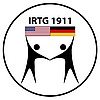A7 (2019 - 2022) - Autocrine C5a/C5aR1 axis activation in conventional pulmonary dendritic cells controls pulmonary tolerance
The lung harbors CD103+, CD11b+conventional DCs (cDC) and plasmacytoid DCs (pDC). CD11b+cDCs contribute to Th2 and/or Th17 development, whereas CD103+cDCs and pDCs promote tolerance. House dust mite (HDM) allergen exposure of the airways activates the complement system and generates the anaphylatoxins (AT) C3a and C5a in humans (Krug et al., 2001) and mice (Köhl et al., 2006). These ATs exert their biologic function through their cognate G-Protein coupled Receptors (GPCR), C3a receptor (C3aR), C5aR1 and C5aR2. Importantly, C5aR1 is expressed on CD11b+cDCs (Karsten et al.,2015). Previously, the Köhl laboratory has shown that targeting or genetic deletion of C5aR1 results in an increased allergic phenotype characterized by strong airway hyperresponsiveness, mucus production and airway inflammation that was associated with strong maladaptive Th2 immune responses (Köhl et al., 2006). This increased allergic phenotype was associated with a strong increase in CD11b+cDCs in the lung of C5aR1-deficient or C5aR1-targeted mice. Since exposure to HDM leads to increased generation of C5a, it is rather paradoxical that the absence of C5aR1 leads to an enhanced allergic phenotype. It suggests that activation of C5aR1 by C5a binding is critical for CD11b+cDCs to be tolerogenic and non-inflammatory. At this point, it is unclear, how C5aR1 signaling keeps CD11b+cDCs tolerogenic and protects the development of maladaptive Th2/Th17 immune responses in allergic asthma.
Aims:
1. Define the activation pathways by which C5aR1 controls the tolerogenic potential of CD11b+cDCs via MHC-II/CD40.
2. Determine the mechanisms that control C5 production and C5a generation in C5aR1+and C5aR1 CD11b+cDCs in response to allergen uptake and T cell interaction.
3. Delineate the mechanisms that control C5aR1 expression on CD11b+cDCs upon allergen sensitization in vivo.
4. Define the potency of C5aR1+and C5aR1-cDCs to drive T cell proliferation in vivo and to induce an allergic phenotype.
Principal Investigators


Students




